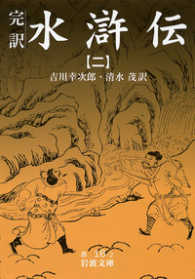Full Description
Up to 200,000 Melanesian men, women, and children work as artisanal miners, yet their lifeworlds are seriously under-researched. This ethnography of a multigenerational community of migrant miners in Papua New Guinea shows that dreaming mediates how they experience and manage gold mining. Men argue that they alone can mine successfully by forming oneiric marriage bonds with the spirits of the land. Women draw on their own dream experience to challenge this, asserting their equal capacity to marry spirits and their right to mine. For women and men alike, dreams provide legitimations of agency and commentaries on mutual dependencies and moral obligations in the domestic domain and between humans and nonhumans.
Contents
List of Illustrations
Acknowledgments
Notes on Text
List of Abbreviations
Introduction
Part I: The Ethno-Historical and Theoretical Context
Chapter 1. How a Spirit-Infested Mountain Became a Colonial Resource Frontier and Then a Homeland
Chapter 2. A Field of Dreams: Hamtai Gold Dreams and the Anthropology of Dreaming
Part II: Analogic Dreams
Chapter 3. Mining as Gardening
Chapter 4. Mining as Procreation
Chapter 5. Mining as Marriage to the Mountain Spirits
Part III: Conjugality, Affinity and Human-Mineral Relations
Chapter 6. On the Ambivalence of Gold, Spirits, Women and Affines
Chapter 7. Inscriptive Work, Ritual Exchange and Conjugal-Affinal Respect in Human-Mineral Relations
Chapter 8. Dreams, Melanesian Perspectivism and the Fractal Morality of Mining
Part IV: Gender, Mining and Cosmic Decline
Chapter 9. Melanesian Male Rituals, Spirit Marriage and Hegemonic Masculine Perspectives on Depleting Minerals
Chapter 10. 'Just Lies Men Use': Women's Counter-Perspectives on Gold and Complementary Visions of Masculinity
Conclusion: Dreams, 'Bitter Gender' and the Value and Values of Minerals in Melanesia and Beyond
Glossary of Mining Terms (English and Tok Pisin)
References
Index







